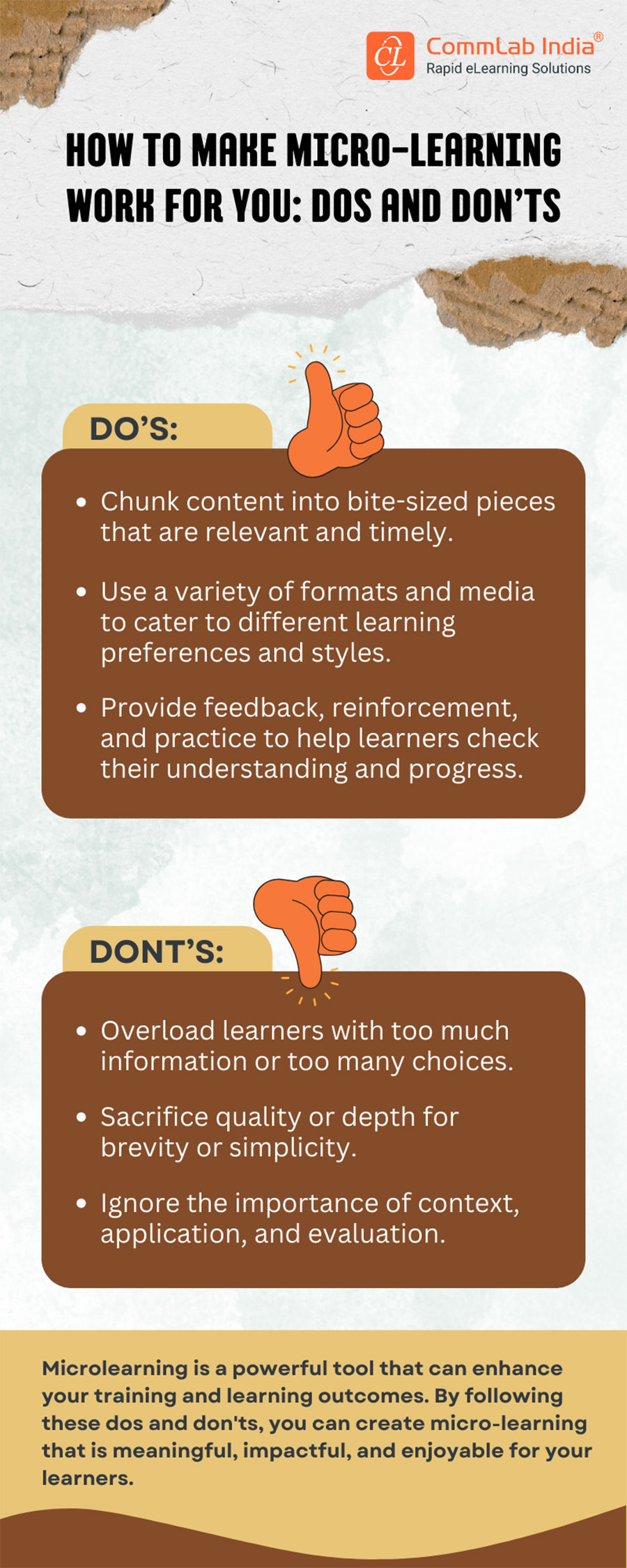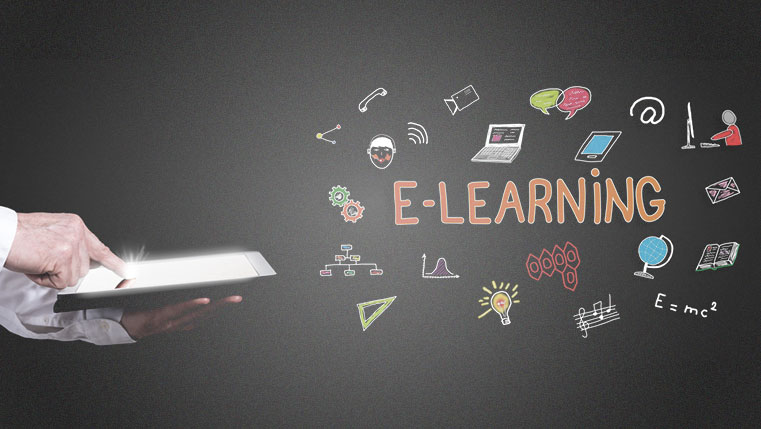Designing Effective Microlearning — Dos and Don’ts [Infographic]
![Designing Effective Microlearning — Dos and Don’ts [Infographic] Designing Effective Microlearning — Dos and Don’ts [Infographic]](https://blog.commlabindia.com/hubfs/blogs/microlearning-design-dos-donts-info.jpg)
Microlearning, characterized by its short, focused, and engaging format, has become a crucial in modern learning strategies for learners as the attention spans are at a premium. Microlearning offers a solution to deliver targeted information rapidly and effectively. By offering complex topics into bite-sized, digestible modules, learners can grasp key concepts without feeling overwhelmed.
As architects of learning experiences, instructional designers must master the art of delivering relevant content without compromising engagement. Microlearning, with its emphasis on brevity and specificity, aligns seamlessly with the principles of instructional design. Let's explore the art of designing impactful microlearning with the dos and don’ts of designing microlearning!
Key Features of Effective Microlearning
1. Brevity
Microlearning delivers content in concise, bite-sized modules. This brevity ensures that learners can easily learn and retain knowledge without feeling overwhelmed.
2. Relevance
Microlearning content is highly targeted and relevant to a single specific learning objective. It addresses immediate learning needs and provides practical, applicable knowledge that learners can use in real-world.
3. Accessibility
Microlearning modules are easily accessible, allowing learners to engage and learn anytime, anywhere. This accessibility accommodates the diverse schedules and preferences of modern learners.
4. Engagement
Effective microlearning captivates learners through interactive and engaging formats like videos, quizzes, flashcards and more. Utilizing multimedia elements, gamification, and real-life scenarios, it keeps learners motivated and encourages active participation of learners.
5. Integration with Workflow
Microlearning effortlessly fits into daily workflows. It aligns with the "learning in the flow of work" concept, allowing learners to apply newly acquired knowledge directly to their tasks and responsibilities.
6. Scalability
Microlearning is scalable, making it feasible for organizations to create and update content efficiently. It accommodates the evolving needs of learners and the dynamic nature of workplace requirements.
7. Measurable Outcomes
Effective microlearning is designed with clear learning objectives and measurable outcomes. This allows organizations to evaluate the impact of the learning content and adjust strategies based on data-driven insights.
→ Register Now: Unleash Microlearning to Slay Your Training Challenges [Webinar]
Microlearning— Dos and Don’ts
Dos
1. Focused Content
Keep it concise and focused on a single learning objective. Microlearning works best when it addresses specific topics.
2. Interactive Elements
Add interactive elements like quizzes, scenarios, or games to engage learners actively.
3. Mobile Optimization
Ensure microlearning modules are accessible on various devices, emphasizing mobile responsiveness for on-the-go learning.
4. Visual Appeal
Use visually appealing elements, such as infographics or short videos, to enhance learner engagement and understanding.
5. Regular Updates
Microlearning is adaptable so update content on regular basis to keep it relevant and aligned with changing needs.
Don'ts
1. Overwhelming Content
Avoid fitting chunks of information into one microlearning module. Stick to the essentials.
2. Ignoring Feedback
Pay attention to learner feedback and adapt content accordingly. Ignoring input can hinder the effectiveness of microlearning.
3. Neglecting Context
Consider the context in which learners will access microlearning. Ensure it aligns with their needs and workflow.
4. Complex Navigation
Keep navigation simple and user-friendly. Avoid complex structures that might confuse learners.
5. Lack of Assessments
Assessments are crucial for gauging understanding and reinforcing learning. So, don't skip them.
Here are more dos and don’ts in microlearning design in the form of an infographic.
Wrapping it up!
Mastering the art of effective microlearning design empowers instructional designers to revolutionize the learning experiences they craft. By distilling complex concepts into bite-sized, engaging modules, learners can absorb information effectively and retain it over time.
If you're eager to delve deeper into the world of microlearning, unlock strategies for for optimizing its potential and discover how it helps overcome training challenges, then be sure to register for our upcoming webinar Unleash Microlearning to Slay Your Training Challenges to discover practical insights and innovative approaches to harness the power of microlearning. Register now!







![5 Do’s and Don’ts of Gamification [Infographic]](https://blog.commlabindia.com/hubfs/Imported_Blog_Media/elearning-for-product-training-questions-infographic.jpg)